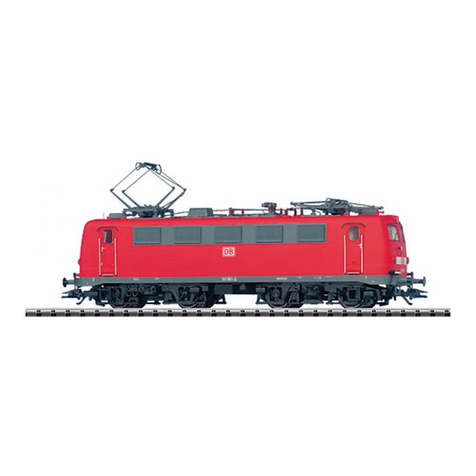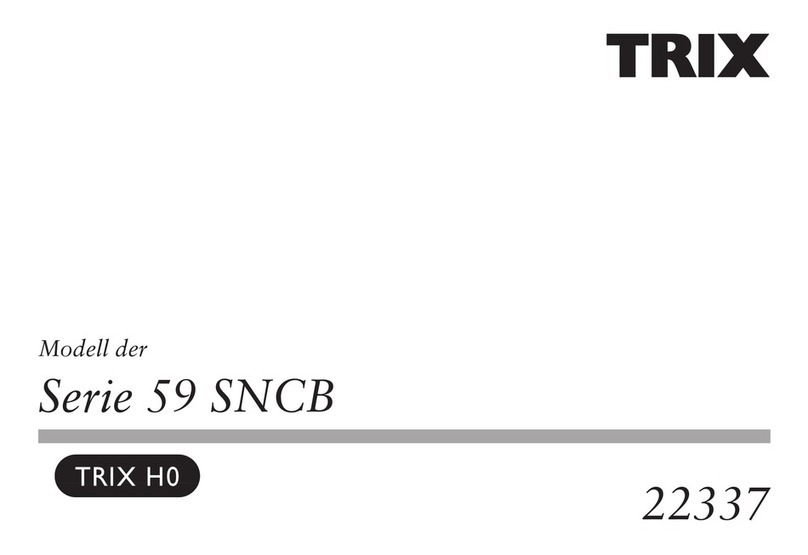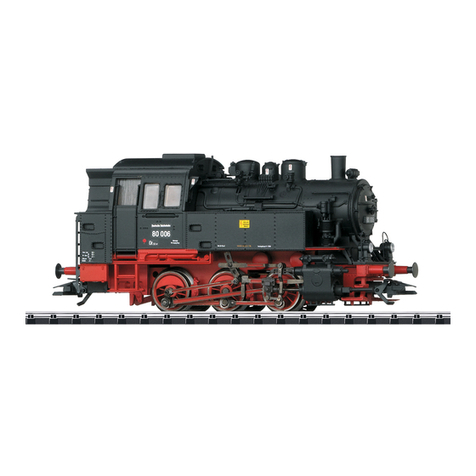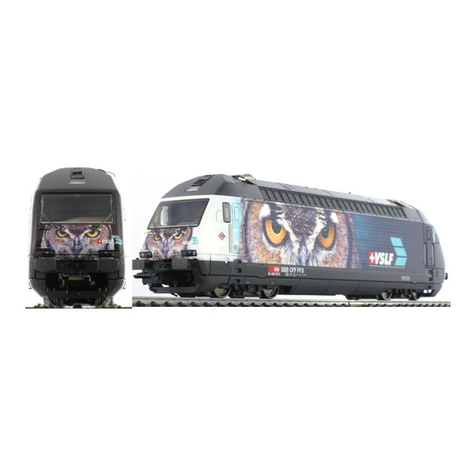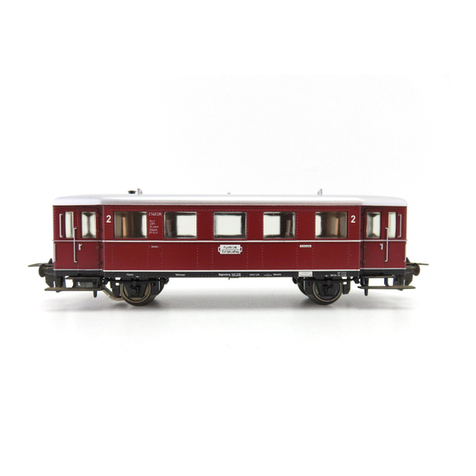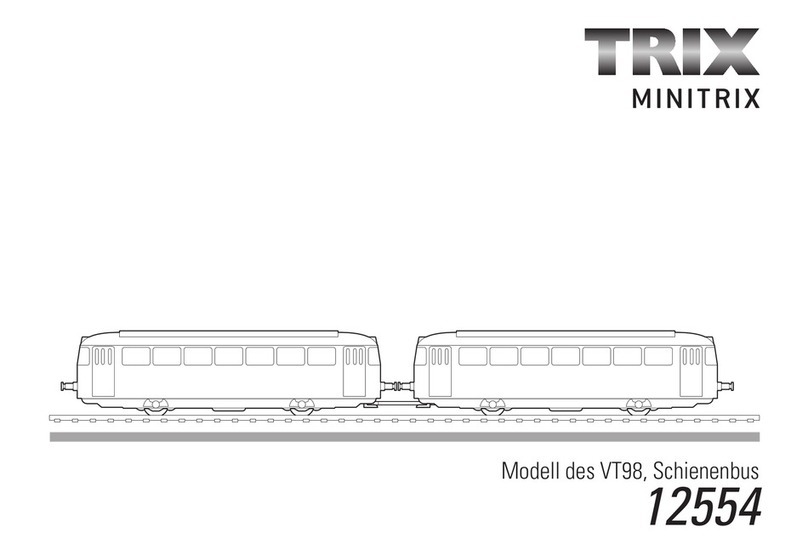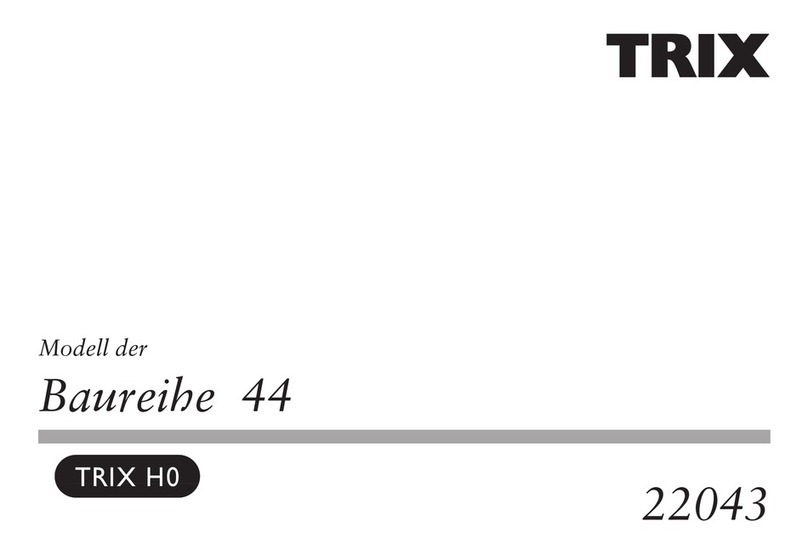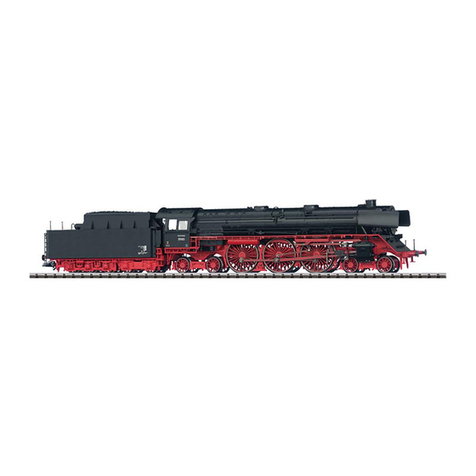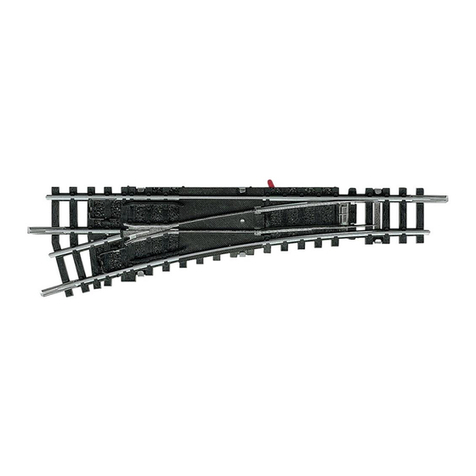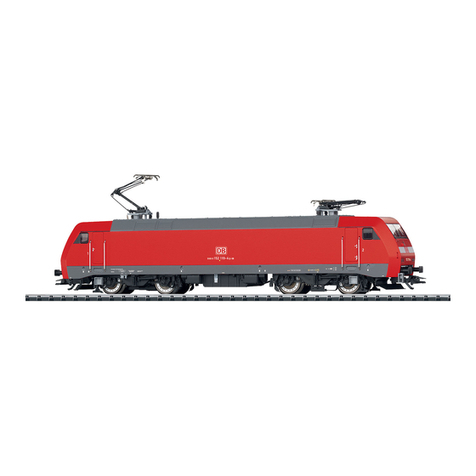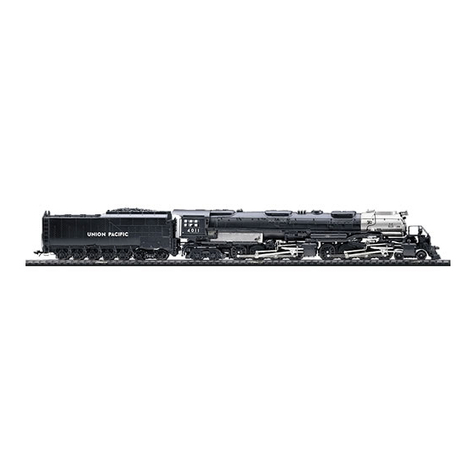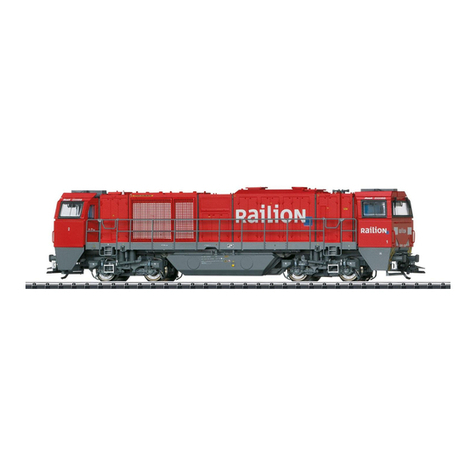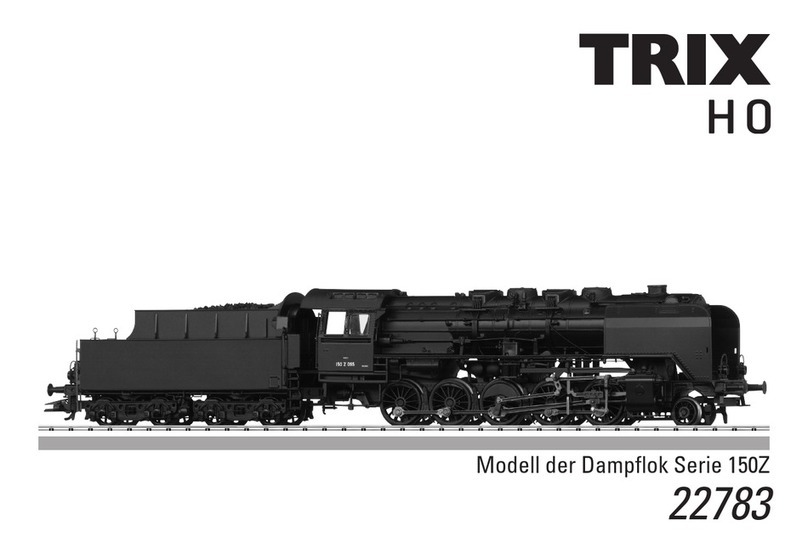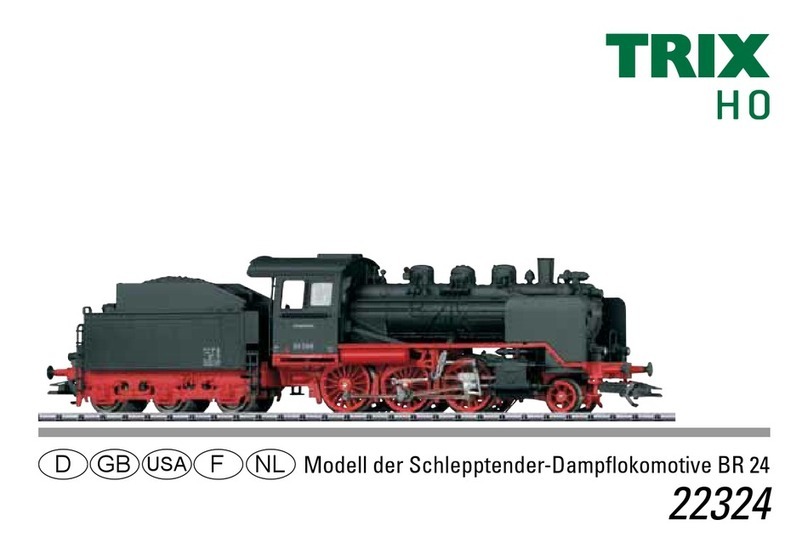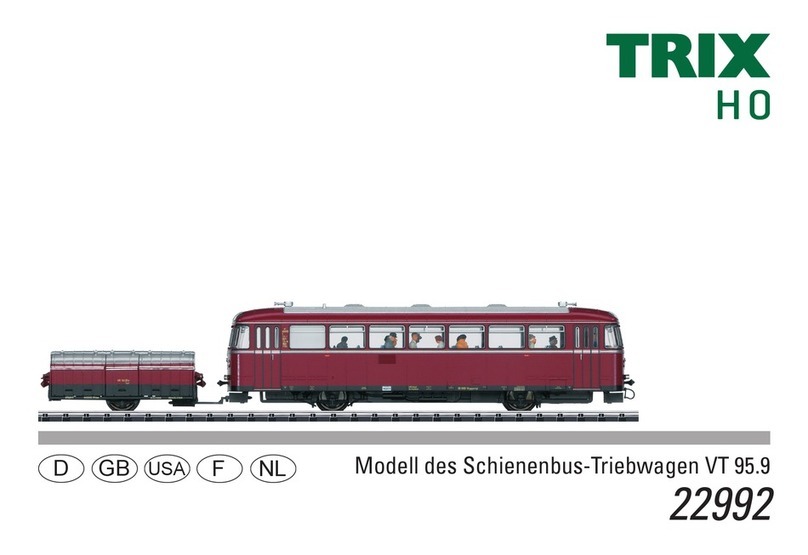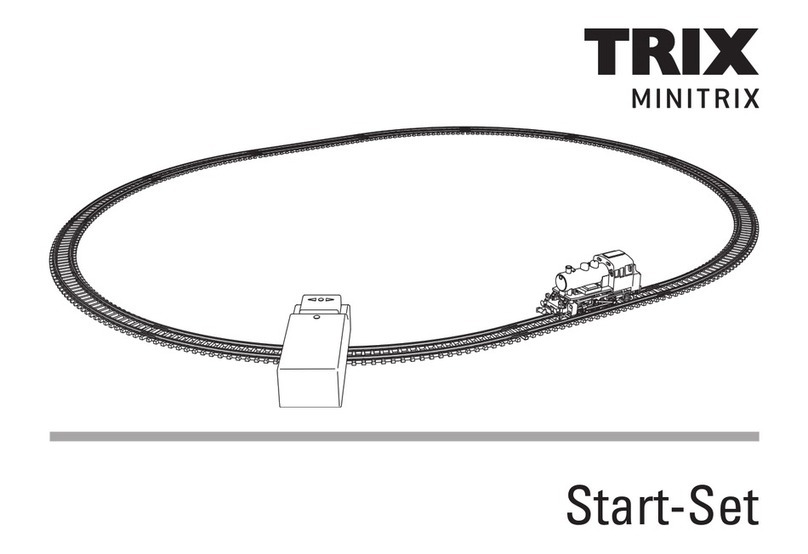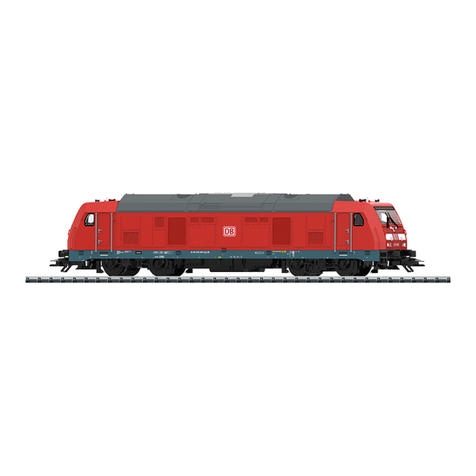8
Functies
• Electronique intégrée pour exploitation au choix avec transforma-
teur-régulateur conventionnel délivrant du courant continu, avec
Selectrix ou avec des sastèmes de vonduite digitale conformes aux
normes NMRA.
• Reconnaissance automatique du système entre exploitations
numérique et analogique.
• Pas de reconnaissance automatique entre les systèmes
Selectrix (SX) et DCC.
• L’intégralité des fonctions est disponible uniquement en exploita-
tion Selectrix 2 (SX2) et DCC.
• Feux triples à l‘avant, deux feux blancs de fin de convoi à l‘arrière,
avec alternance selon sens de marche.
• Eclairage intérieur intégré.
• Eclairage assuré par diodes sans entretien.
• Analogique 14 volts =, digital 22 volts ~
• La rame automotrice peut être complétée par la voiture intermé-
diaire réf. 15855, également éclairée.
Remarques relatives au fonctionement en modedigital:
• Une première exploitation en système numérique (Selectrix ou DCC)
exige le réglage correspondant du décodeur. A cet effet, le déco-
deur doit être programmé une fois dans ce système numérique.
• La voiture motrice et la voiture pilote ne peuvent pas être
programmées simultanément.
Elles doivent être programmées l’une après l‘autre et pour cela
placées séparément sur la voie. Sur la voiture pilote, seule
l‘adresse doit être programmée (comme sur la voiture motrice).
• En ce qui concerne la procédure de réglage des divers paramè-
tres, veuillez vous référer au mode d‘emploi de votre centrale de
commande multitrain.
• Les valeurs encodées en usine ont été sélectionnées pour garantir
une exploitation exempte de problèmes.
•
En usine, c‘est l‘adresse „01“ (Selectrix) / „03“ (DCC) qui est program-
mée pour une exploitation digitale de cette locomotive.
• En cas d‘exploitation numérique DCC, une alimentation des
sections de freinage avec du courant continu de polarité contraire
n‘est pas possible à cause des réglages faits en usine. Si cette
option est désirée, il faut alors renoncer à une exploitation conven-
tionelle et modifier les réglages (CV 29 / bit 2=0).
Remarque sur la sécurité
• Veuillez impérativement respecter les remarques sur la sécurité
décrites dans le mode d’ emploi en ce qui concerne le système
d’ exploitation.
• La tension de traction doit toujours être augmentée lentement
et de manière régulière.
• En exploitation sous courant continu, les qualités de roulement
de la loco dépendent du régulateur de marche utilisé.
Pas pour:
• appereils de commande avec pilotage par impulsion de largeur
variable.
• éclairage de train permanent sur réseaux analogigues.
• Trix ems.
Tout recours à une garantie commerciale ou contractuelle ou à une demande de
dommages-intérêt est exclu si des pièces non autorisées par Trix sont intégrées
dans les produits Trix et/ou si les produits Trix sont transformés et que les pièces
d‘autres fabricants montées ou la transformation constituent la cause des défauts
et/ou dommages apparus. C‘est à la personne et/ou la société responsable du
montage/de la transformation ou au client qu‘incombe la charge de prouver que le
montage des pièces d‘autres fabricants sur des produits Trix ou la transformation
des produits Trix n‘est pas à l‘origine des défauts et ou dommages apparus.

